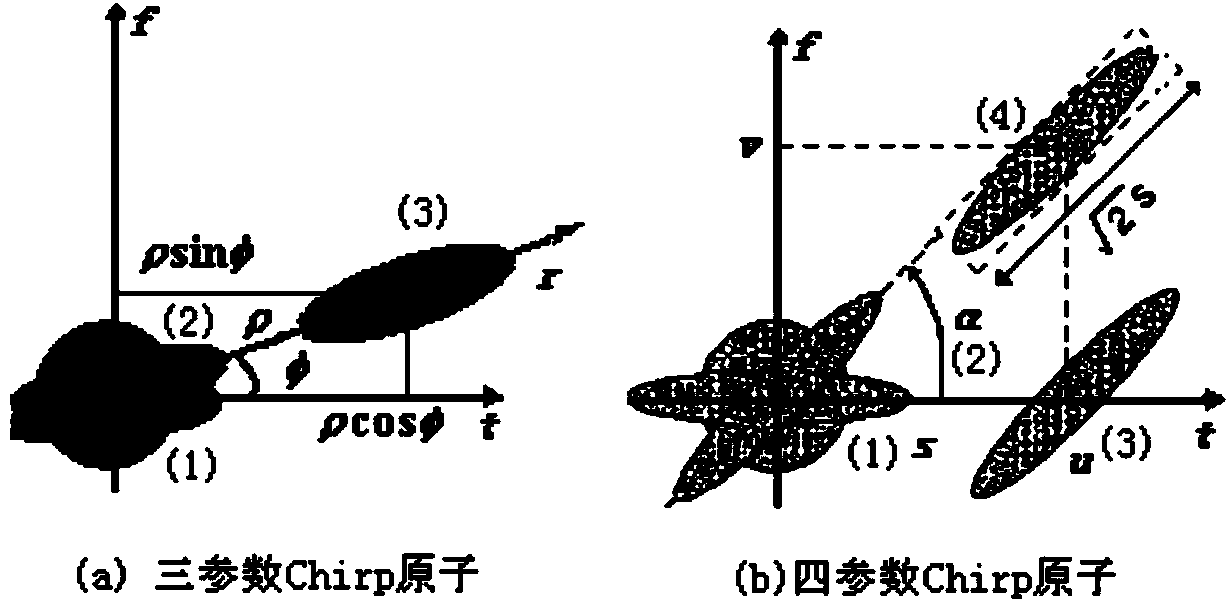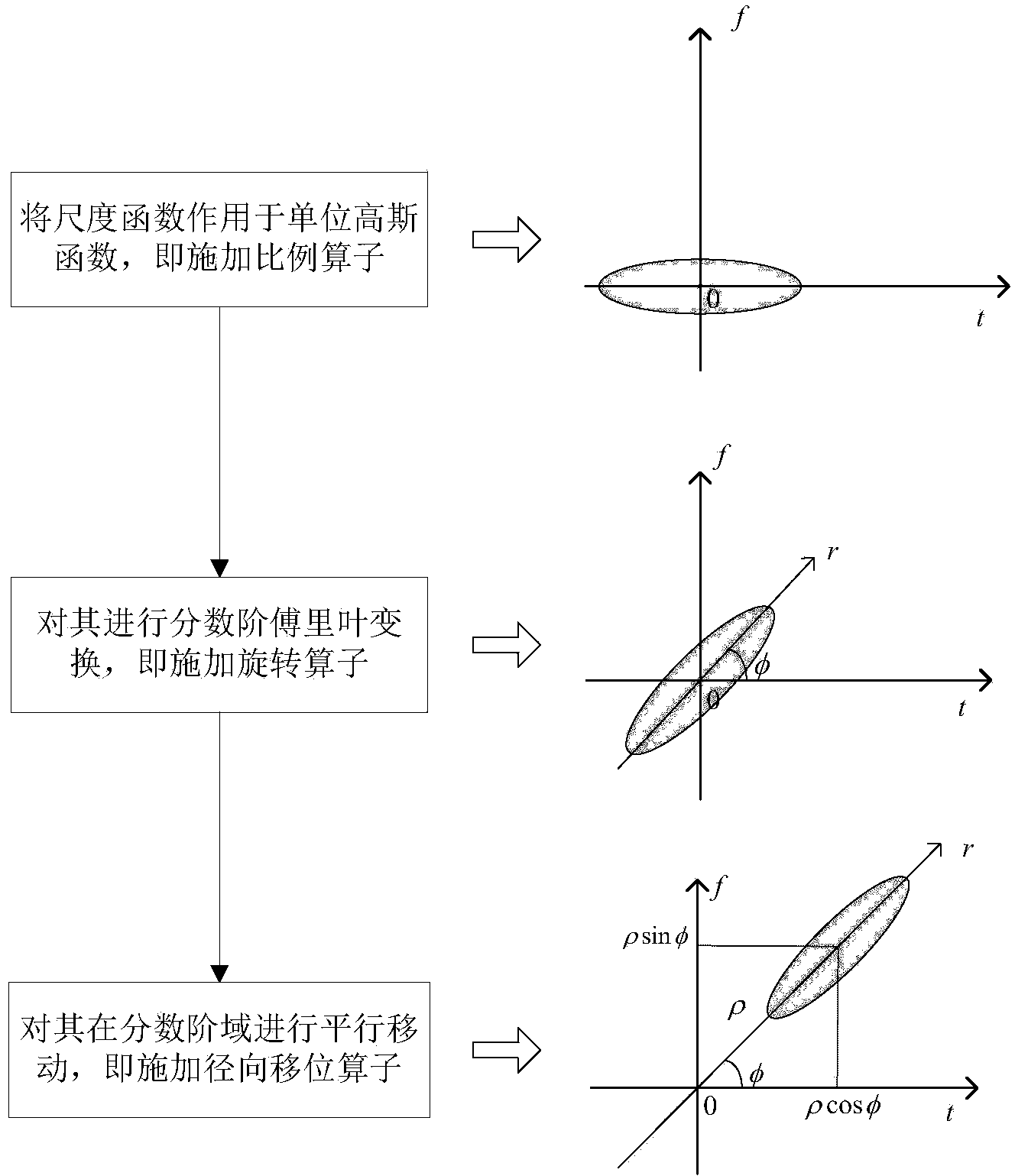Method of Chirp time-frequency atoms denoted with three parameters
A parameter representation and time-frequency atomic technology, applied in the field of simplified representation, can solve the problems of low matching degree of Chirp components, unfavorable signal feature extraction and signal sparse representation, etc.
- Summary
- Abstract
- Description
- Claims
- Application Information
AI Technical Summary
Problems solved by technology
Method used
Image
Examples
Embodiment Construction
[0029] Step 1: Apply the proportional operator to the Gaussian function to obtain a slender Gabor time-frequency atom;
[0030] Step 2: Apply the rotation operator to the Gabor time-frequency atom, that is, perform fractional Fourier transform on the signal to rotate the signal to the fractional domain;
[0031] Step 3: apply a radial shift operator, that is, make the rotated signal move radially along the direction of rotation;
[0032] Step 4: obtain the Chrip atom represented by three parameters of scale parameter, rotation parameter and radial displacement parameter.
PUM
 Login to View More
Login to View More Abstract
Description
Claims
Application Information
 Login to View More
Login to View More - R&D Engineer
- R&D Manager
- IP Professional
- Industry Leading Data Capabilities
- Powerful AI technology
- Patent DNA Extraction
Browse by: Latest US Patents, China's latest patents, Technical Efficacy Thesaurus, Application Domain, Technology Topic, Popular Technical Reports.
© 2024 PatSnap. All rights reserved.Legal|Privacy policy|Modern Slavery Act Transparency Statement|Sitemap|About US| Contact US: help@patsnap.com










